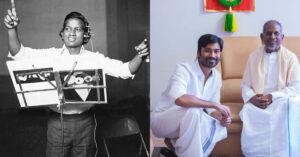Must Listen: The Songs of These 4 Sisters Are One of Nagaland’s Finest Exports
Tetseo Sisters are a vocal quartet who make music soaked in the rich Naga folk traditions, and talk about their beginnings, influences, and the process of taking traditional music to the mainstream.
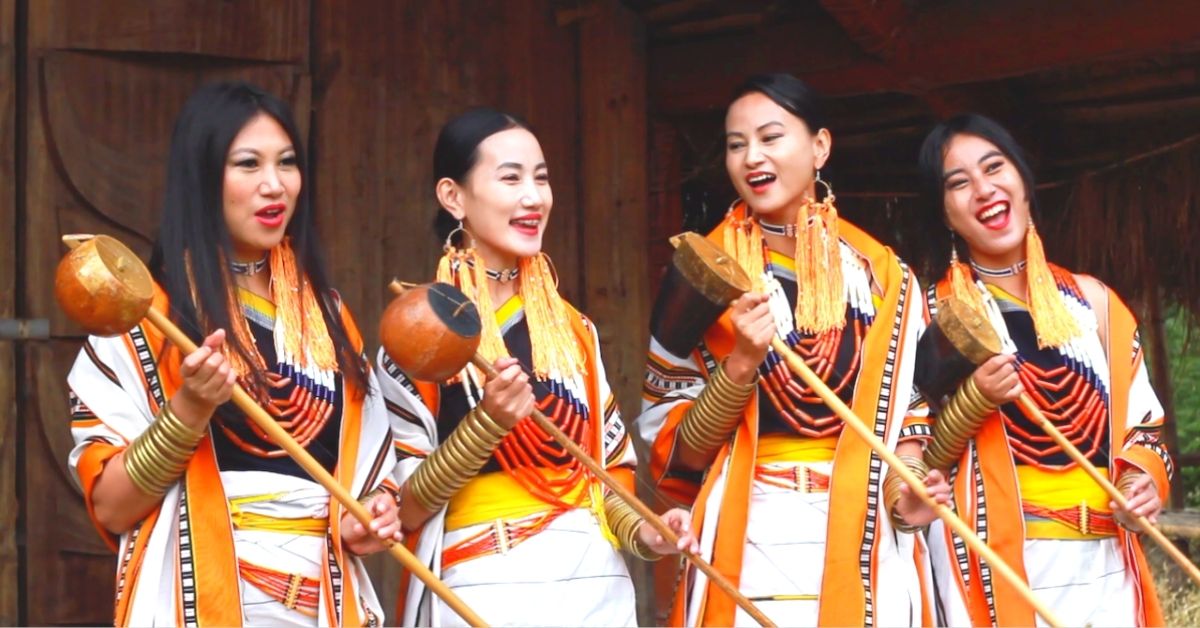
The Tetseo Sisters rank among Nagaland’s greatest cultural exports.
Celebrating songs of life, the richness of their natural surroundings, and storytelling through the language of Li or folk singing in the Chokri Naga dialect, sisters Mütsevelü (Mercy), Azine (Azi), Kuvelü (Kuku) and Alüne (Lulu), as well as their brother Mhaseve (MKT), have undertaken a remarkable artistic journey.
They have taken their music, soaked in Naga folk tradition, beyond the confines of Northeast India to countries including South Korea, China, United States, United Kingdom and Thailand, winning multiple accolades like the Governor’s Award for Excellence in Music in 2018 and Best Folk/Fusion Act award at the first ever Indihut Music Awards 2015 along the way. The Tetseo Sisters speak to The Better India about their lives and music.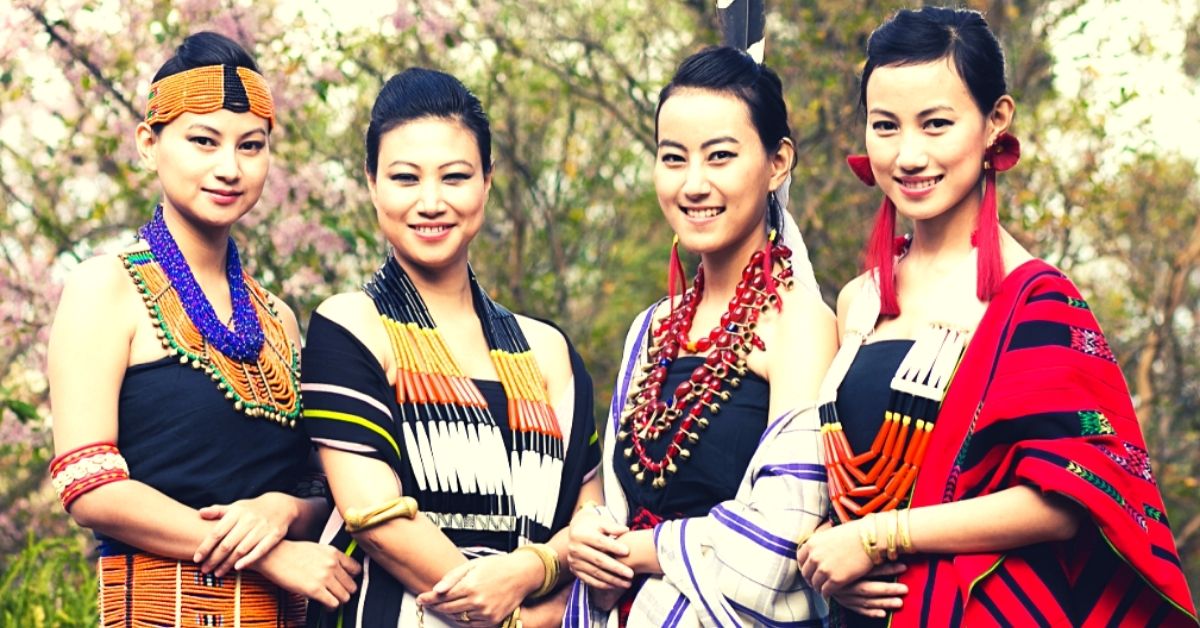
It’s a family affair
Growing up in Kohima, the siblings of the Chakhesang Naga tribe were surrounded by music from an early age.
“All of us have unique and distinct tastes based on the times that we grew up in. Our parents would play Abba, Boney M, Elvis Presely, The Beatles and a variety of country and gospel artists. We also listened to classic rock, country, blues, jazz, western classical and pop music from artists like Etta James to Britney Spears. Meanwhile, we also enjoyed Bollywood classics by artists like RD Burman and Kishore Kumar. In Church, we sang in the choir and performed Christmas carols, while Naga folk songs were an integral presence at home,” says Mercy, the eldest.
Mercy, Azi (since 1987), Kuku and Lulu (since 1992) have performed for audiences in Church, school, social gatherings, formal events and even Doordarshan recording sessions. They formally came together as Tetseo Sisters in 1994. Since then, however, they’ve not always performed as a quartet. They’ve performed as duos, trios and solo acts, covering popular English songs and traditional folk songs under the banner of Tetseo Sisters or Tetseos.
“While it’s difficult to pinpoint when we came together officially, we have always been performing together as siblings, with either Mhaseve or other musicians. But as siblings living separate lives in different cities over the years, it has become a challenge for all of us to be together at the same events. But fortunately we have found a working rhythm,” says Kuku.
Making a living entirely through music, however, has not been easy. Since the sisters began earning money performing in school, college and in between jobs, only Kuku and Mercy have become full-time musicians (since 2014). Lulu, meanwhile, studied medicine and recently graduated, serving today as a frontline COVID-19 healthcare worker. Azi is a stay-at-home mom, but joins her sisters on tours or to record new music.
It was around 2006 when the sisters really started to take their musical endeavours as a collective outfit more seriously.
“We got more serious about building the Tetseo Sisters brand on social media, becoming more responsive to event inquiries and even got ourselves a website. Since then, our growth has been organic,” says Mercy.
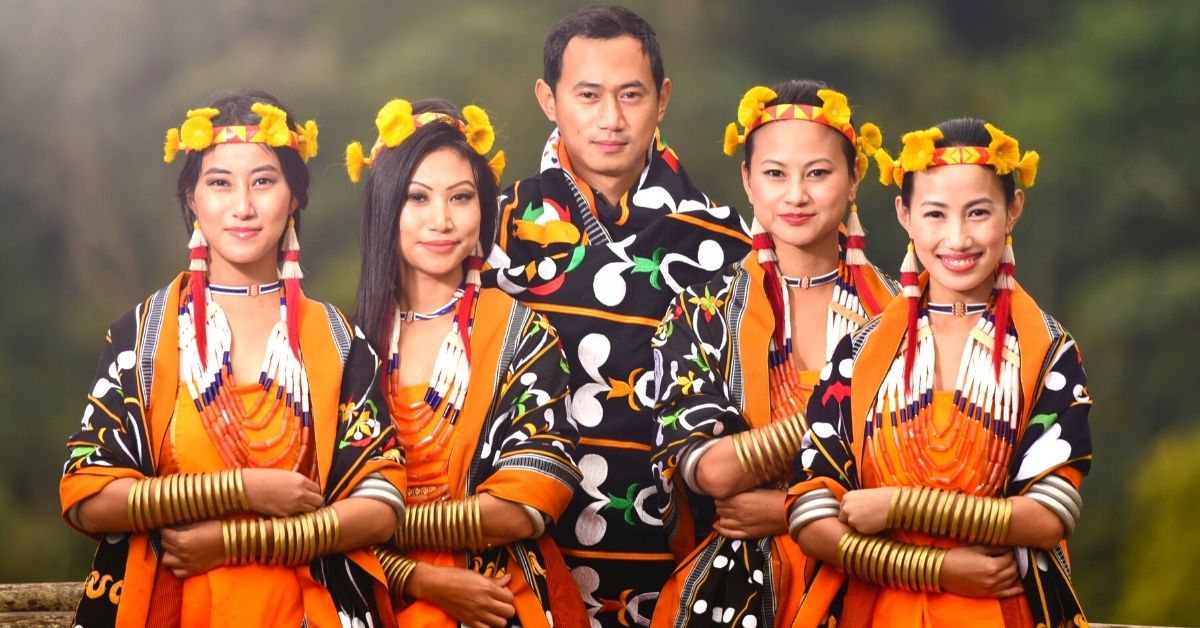
Bending genres
“We play traditional folk, folk fusion and covers as well, depending on the event. We are notably a folk/folk fusion act. The fact that we sing in Chokri also confuses people into thinking that every song in our language is folk, which is not true. Most of our collaborations have an element of contemporary or folk Naga music. To us, folk fusion is anything experimental with a hint of folk, a mix of genres/sounds with folk, or Naga folk reimagined. We don’t want to stick to a particular genre so we have been fluid and experimental,” says Kuku.
Mercy adds, “When we make fusion music, we are working as artists trying to find our space and make sounds we would like to hear and inspire others with. We have tinkered with western sounds to harmonise and support traditional melodies. We have reimagined traditional Chokri music, which is vocal-based, and added instruments like guitars, violin, keys, tabla, dholak and other mainstream Indian percussion instruments to our Naga sounds made by the Tati (traditional one-string instrument), Khro Khro (shakers) and Bamhum (traditional flute), among others. We have played around with electronic, house and disco music, and even written raps in Chokri, Hindi and English.”
At the heart of their music, however, is the folk aesthetic. As children, their parents acquainted them with the traditional Li (folk song in Chokri Naga) in songs. The Tetseo Sisters launched their first album ‘Li Chapter One : The Beginning’ in 2011 at the famous Hornbill Festival.
“When our parents moved to Kohima from our village Thüvopisü, they brought the music alive for their peers as well as us. They have been very instrumental in reviving and preserving the culture of our people. Our father also makes our instruments while mom is a master weaver and an expert in beading and making traditional jewelry,” says Lulu.
The Chakhesang Naga community is known to have a rich repertoire of folk songs. They are famous for their colourful costumes, dances and melodious songs in both festivals and everyday life. Li is an integral part of village life. There is a Li for every moment, and its flexibility is quite astounding. You can make verses to any song and sing along.
“Li is simple yet nuanced and poetic. The words are never quite what they mean and hold many secrets and stories. There are definite vocal parts for males and females. There is an equivalent of tenor, alto, bass and soprano for both male and female performers and a few interjecting harmonies as well. So in total, upto nine different harmonies can be sung together that don’t quite fall on the western scale, especially the classical yodels, vibrato and solo/duet vocalisations. Many of the Li have call and response patterns. Some Li are chants and only sung by males. Some are sung only by children and others by women. What is also distinct about Li are the throat voice projection and the mellifluous harmonisation,” Mercy explains.
“Through our art, we were learning more about our people, our history, the world we once came from and how far we have moved away from that life. Thus, it became imperative for us to document, record our work and have a tangible body of work to show for our journey. That culminated in our first album, which is a compilation of the first folk songs we learnt and loved, and saved for posterity,” adds Kuku .
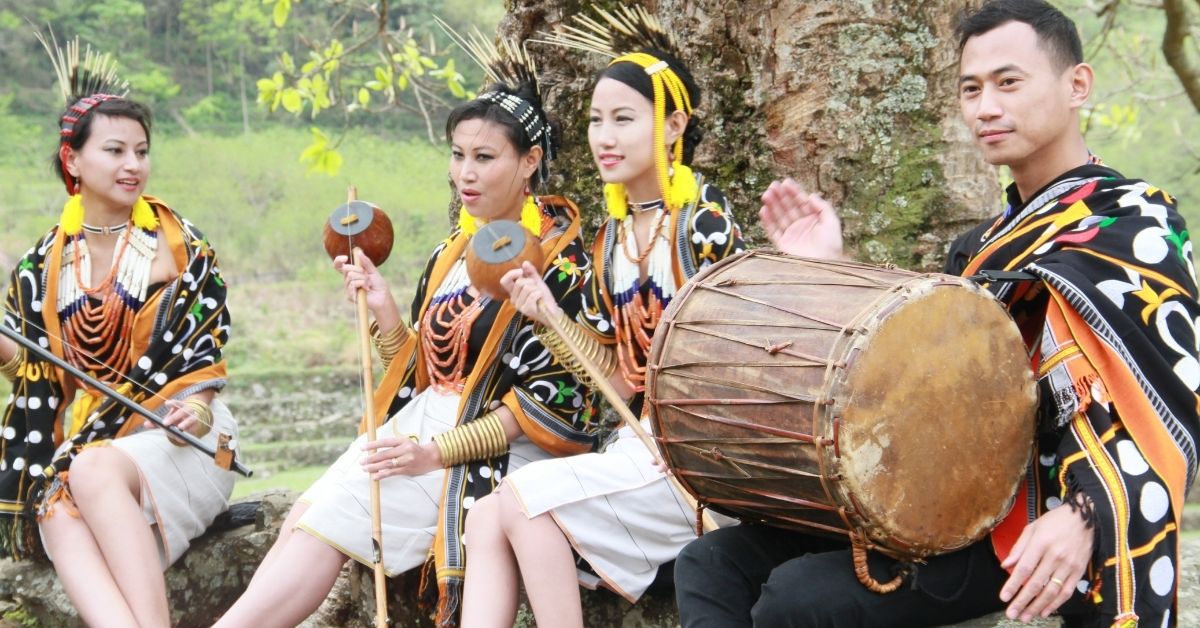
The process
The formula or process behind the band’s music differs with every song. Mhaseve, the brother, is the brains behind music production, and the sisters write the song lyrics. But these roles aren’t set in stone. Everyone offers their own inputs, and the process of making music is both collaborative and democratic. Take the example of their song ‘Hiyo’ from their EP, ‘A Slice of Li’ released in November 2019.
“Hiyo is based on a traditional tune and we have written new lyrics to add to the traditional ones. So we recorded the vocals as per the traditional beat and speed after we learned it from our parents. The music was later arranged and then produced by Mhaseve and a friend, Vitolu Zhimo (Vitz),” says Mercy.
Mhaseve adds, “Mostly, we write the lyrics first and then work on the melody. The traditional ones are usually based on the folk format and we rewrite verses keeping the original chorus intact. A few times, we had the melody and then wrote lyrics around it. Sometimes we write a full song like a poem, add a traditional chorus or verse, and then rearrange it to a more song-friendly format. It works in all kinds of permutations and combinations.” The Tetseo Sisters have mostly recorded their songs at Mhaseve’s bedroom-cum-studio in Kohima.
Connecting with the Indian mainstream
Bollywood cover songs have long been a staple of the sisters in their private performances. In December 2017 they did a cover of AR Rahman’s ‘Barso Re’ from the movie ‘Guru’ for an episode of Bindass Play’s Bollywood Republic. It took them just three days to learn the song, make a new arrangement, record and shoot the video.
Although the response to their performance was great, it was their next video that really caught the eye of many. It was the folk version of the song ‘Dil Diyan Gallan’ rendered by Neha Bhasin. Unfortunately, Azi couldn’t make it home for the session because of lockdown restrictions in her area.
“We enjoy singing many Bollywood songs and the connection it establishes with a mainstream audience. The instrument we used in the video is Tati, the Naga version of the ektara. It’s a traditional one stringed guitar played by the Chakhesang and Angami tribes of Nagaland. It merges beautifully with the folkish arrangement of Dil Diyan Gallan,” says Azi.
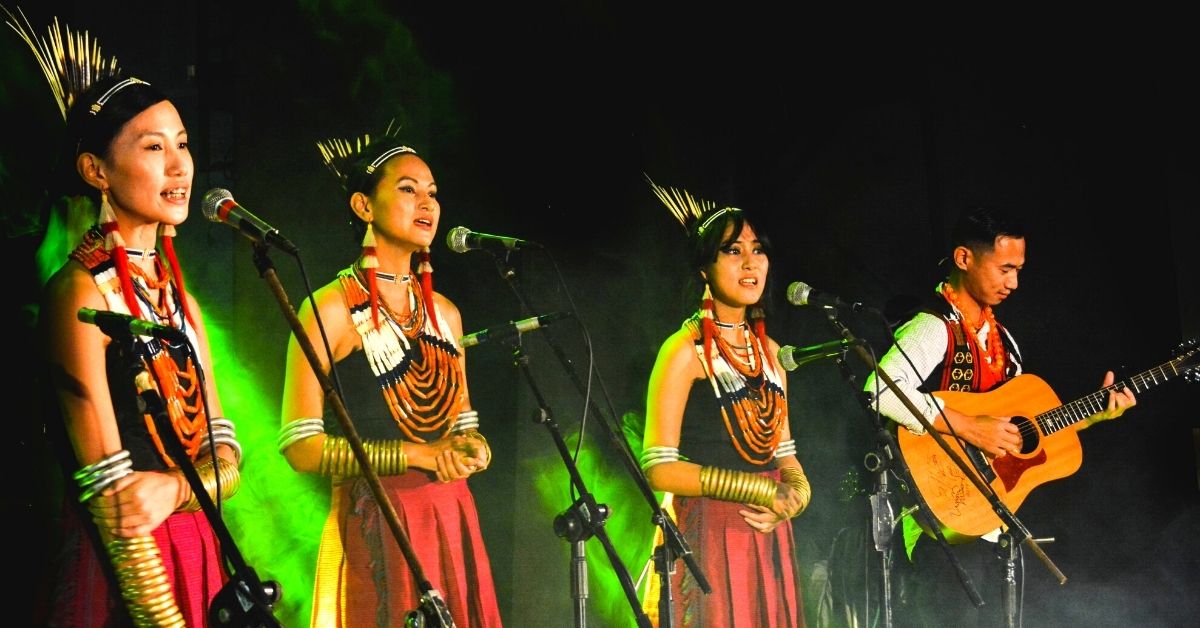
Capturing beauty
A standout feature of the Tetseo Sisters are their music videos, where they capture the natural beauty of Nagaland and elegant Naga attire.
“Our videos are self-sponsored projects backed by the generous collaboration of artists who help execute our vision. In the ‘O Rhosi’ video, you see the festive colours of Naga textiles, beads and textures, as well as fusion wear – skirts, fitted drapes, tees with graphic Naga prints by artist Cynthia Kolakhe, handloom and woven corsets from our collaborator designer Keds Krome, who works magic with handwoven textiles of Nagaland, and even embroidered tops and boleros from our favourite handmade Indian label péro by Aneeth Arora,” Mercy explains.
The vibrant accessories and jewelry comes from Runway Nagaland, personal collections, and their mother’s treasures. The video is shot in picturesque locations across many iconic spaces in Nagaland and Manipur.
Dealing with the pandemic and the road ahead
While the sisters managed to get past the first lockdown without too much suffering, the second wave was brutal and filled with uncertainty.
“We haven’t had a live show in ages. Most of our efforts went into raising funds for people in bad situations. We had no earnings from music. We are simply grateful that we are all well in the family. Our prayers go out to those who have lost family and loved ones,” says Lulu.
The sisters are also working simultaneously on individual projects, and hopefully things pick up soon once this pandemic subsides.
“We feel great joy and validation in being able to represent the country, our land, tribe and state on important platforms. It is humbling and a blessing at the same time. We also feel that artists in Northeast India are finally getting due attention. We hope their representation gets fairer because the country belongs to everyone. We all need to feel that we matter,” says Mercy.
(Edited by Divya Sethu)
Like this story? Or have something to share? Write to us: [email protected], or connect with us on Facebook and Twitter.
This story made me
- 97
- 121
- 89
- 167
Tell Us More
We bring stories straight from the heart of India, to inspire millions and create a wave of impact. Our positive movement is growing bigger everyday, and we would love for you to join it.
Please contribute whatever you can, every little penny helps our team in bringing you more stories that support dreams and spread hope.







